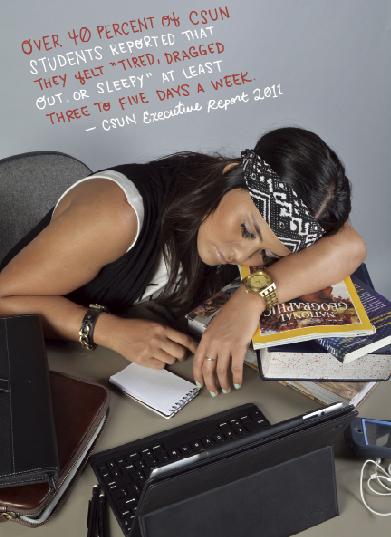
President Dianne Harrison recently announced that a Wellness Center is going to be built on campus, adding to services already provided in the University Student Union (USU).
The original idea of the Wellness Center was introduced as a combination between the USU, Klotz Student Health Center (SHC), Health & Human Development Department and University Counseling Services.
“Our board of directors has approved a budget of $4.1 million. Those are funds we already have so it’s not going to cost the students anything else,” said Kingson Leung, USU coordinator of special initiatives.
Every two years students are offered an opportunity to take the National College Health Assessment, which helps determine any health problems that may affect a student’s academic performance. There are two dominant factors that are making a negative academic impact on campus, according to the 2011 CSUN assessment, stress and sleep deprivation.
“Nationally, stress and sleep difficulties have been the two top health impediments that are affecting college students, and at our campus, they’re even higher,” Leung said. “Being that stress and sleep are the two top health impediments, we decided to help (students) manage their stress and also to have stations where they can take short naps.”
The report has shown that the Wellness Center is not just a desire for students, but an actual need since these health problems is on the rise, according to Leung.
“If they had it here, I would go and use the nap time services, or anything to relieve stress,” said Claudia Santillan,18, a kinesiology major.
Though all things with the center are not finalized, some things have been determined, such as its location, which will be under the current USU computer lab across from the plaza pool.
There will not be individual sleep rooms, Leung said. Rather, there will be a semi-private sleep area.
“It’s really going to benefit students that commute,” said Ameer Wafer, political science major, “Instead of going home for a nap they can nap between classes on campus.”
The layout for the semi-private sleeping area is still under development and multiple varieties of sleep options are being considered during this process according to Leung.
“There’s hammocks, sleep pods, zero gravity chairs and then there’s soft lounge furniture students can sleep on,” Leung said.
The university hasn’t come up with a time limit for naps yet, but there will be staff available to monitor students and wake them if they have a class or any other business to attend to, Leung said.
“Napping too long can make you feel less rested when you wake up,” said Marianne Link, assistant director for health promotion at the Klotz Student Health Center. “Naps should last no more than 20 minutes.”
The Wellness Center will provide other services as well, such as student peer mentor spaces, therapy and consultation rooms, massage and acupuncture. Leung said students need to pay if they want to use massage therapy and acupuncture while the sleeping station is free.
The Wellness Center will not be completed until 2015, Leung said. The time will provide those operating in the center’s future location to switch facilities without interfering with their use of the space.
While the center won’t be done until two years from now, students currently have similar resources available to them.
The Living Well Lounge located in the USU across from the Associated Students ticket office offers free services designed to (help with) stress management and sleep focus, according to Link.
Services provided by the lounge are less spa-like than the Wellness Center but include peer nutrition, counseling, sleep tips, aromatherapy, meditation and more. Alive and Well peer educators, as well as the Klotz SHC peer education group, staff the lounge.





